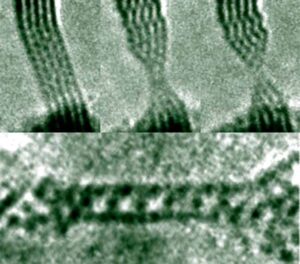Ever played that game where you jump around inside your house trying not to touch the floor because it’s made of lava? Nathan Hellner-Mestelman wonders what would happen if the floor really were made of hot, molten rock
When I was eight years old, my sister and I would play a game where we would jump across furniture, leap over floorspace, and basically do anything we could to avoid touching the ground. If any part of our body did hit the floor, we were out of the game. If you’ve played this game – or have kids who do – you’ll know it’s called “the floor is lava”. The aim is to avoid any contact with the ground because – obviously – it’s made of molten lava.
The trouble is that the game isn’t really consistent with the laws of thermodynamics. Of course, when I was eight, I didn’t realize all the inconsistencies, such as the fact that if we were actually that close to lava, the air temperature would reach dangerously high levels in a matter of seconds, causing severe burns. We also didn’t consider that the furniture itself would rapidly disintegrate.
Recently, however, I have started to question how the game would work if the floor actually were made of lava. I started by assuming that I live in a standard two-storey home, with the floor consisting of basaltic lava, roughly a third of a metre deep. The short answer is that the house would be totally destroyed in a matter of seconds. The long answer is much more interesting.
When in a molten state, basalt rocks reach temperatures of about 1100 °C, making them hot enough to glow bright orange. So if our floor did suddenly turn into basaltic lava, it would create a rapid and massive temperature spike in our house, spreading out within seconds and ultimately setting the property on fire. Our parents wouldn’t exactly be happy.
But can we model what would happen when the lava spreads? During a game of the floor is lava, furniture and other miscellaneous items are usually strewn haphazardly throughout the room, which means there’s ample floorspace for the lava to flow smoothly. We can also assume that all energy is conserved within the household, implying that all windows are shut, the walls don’t radiate heat to the outdoors, and that no players leave the house after reaching thermal equilibrium.
A house has lots of thermal conductors, into which heat can be transferred, including the walls, furniture, players and the air. When the lava floor and the air eventually reach thermal equilibrium, my calculations suggest that the final distributed temperature of the house will be given by [(CmT)lava + (CmT)air]/[(Cm)lava + (Cm)air], where C is heat capacity, m is mass and T is temperature.
Based on figures for the US, the average house has a floorspace of around 215 m2. If we assume the entire floor is transformed into molten lava 30 cm deep, then given basaltic lava’s density of 2800 kg/m3, the total mass of the lava would be around 180,000 kg. That would be enough to collapse your floor, but let’s ignore that slight problem and carry on with the calculation.
The lava and air would eventually reach a final equilibrium temperature of just under 1100 °C. Clearly, any children playing the floor is lava are ignoring this limitation
The heat capacity of basaltic lava is 840 J/kg°C, which means, with a heat influx of 840 J, one kilogram of basaltic lava would be heated by 1 ºC. The air in a house is harder to heat than the lava; its heat capacity is a shade over 1000 J/kg°C. Unfortunately, air has such a low density that all the air in a household may only weigh around 1100 kg. The lava will therefore have a significant effect on the final temperature, with not much heat being absorbed by the air.
Substituting all the numbers into our formula, we find that the lava and air would eventually reach a final equilibrium temperature of just under 1100 °C. Clearly, any children playing the floor is lava are ignoring this limitation. Air that hot would – obviously – be fatal to a human, which feels like the biggest inconsistency with the game. Given that the ambient air temperature is roughly 20 °C, the air would increase in temperature by about 1080 °C, while the lava would only cool by a few degrees. Better luck next time.
In practice, if the floor actually were covered in lava, the entire house would quickly combust, dramatically increasing in entropy, and reaching thermal equilibrium before slowly cooling. So while my findings do not represent an urgent physics emergency, it may be necessary to alert new parents who happen to have physics degrees. But I’d better dash, I’m sure I can feel the floor starting to get a bit toasty.













